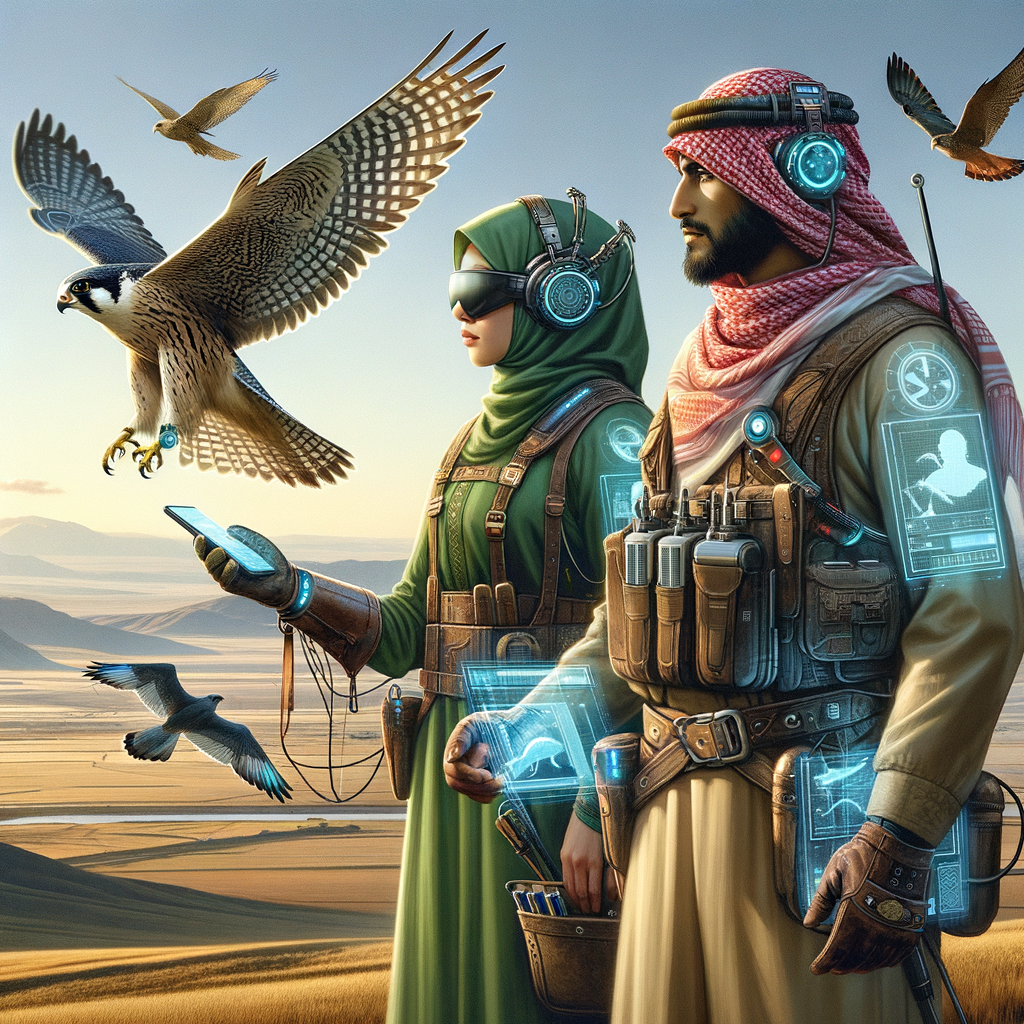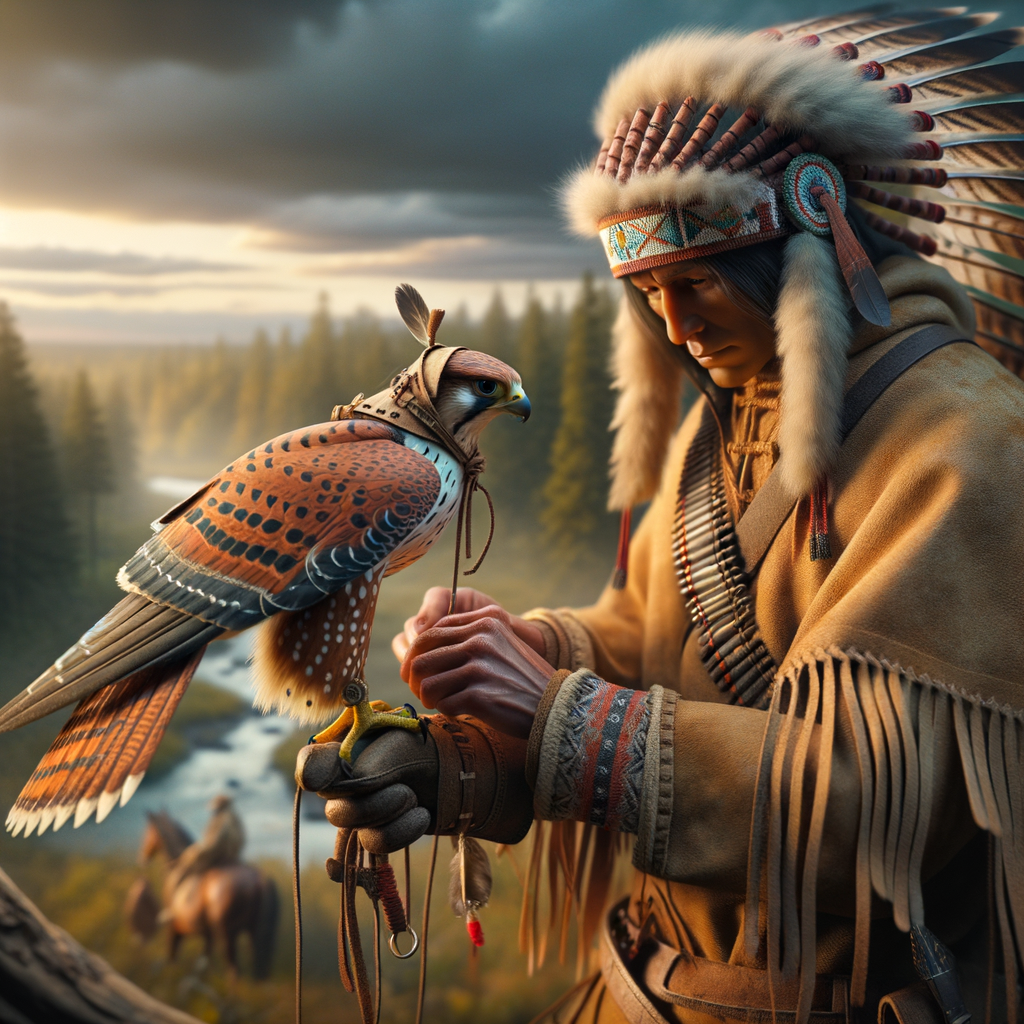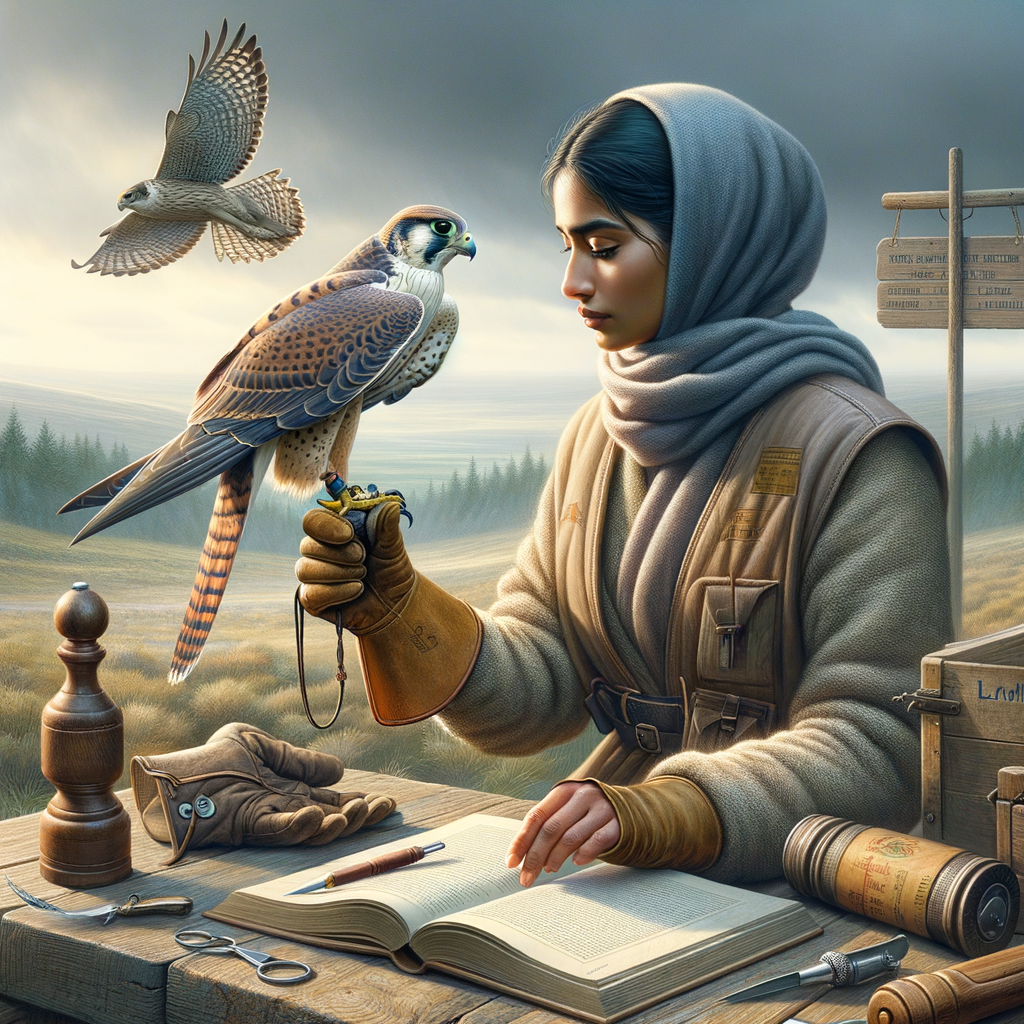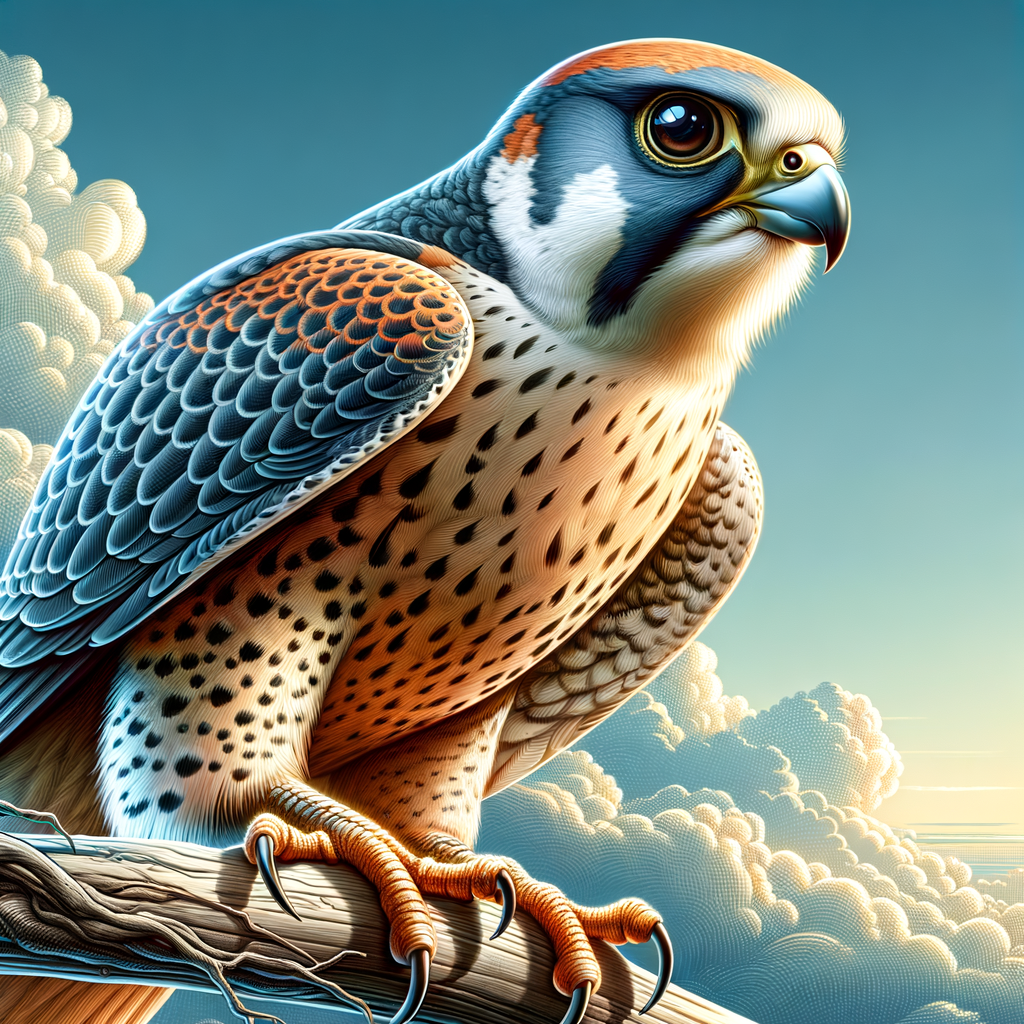Future of Falconry
- Falconry is an ancient tradition that is still alive and evolving today.
- Technology advancements, like GPS and drone training, are helping falconers track birds.
- Conservation efforts are a big part of modern falconry, helping protect bird species.
- Falconry schools and clubs are growing, promoting education and skill-sharing.
- New laws and regulations ensure the ethical treatment of birds.
- Falconry can now be enjoyed as a hobby or as a professional sport.
- Community and global exchanges among falconers are easier with the internet.
- Sustainable hunting practices in falconry help balance the ecosystem.
- Innovations in bird care and training techniques are enhancing the practice.
- Falconry offers a unique bond between humans and birds, blending tradition with modern methods.
The Future of Falconry: Taking Flight into Tomorrow
Here at Learn Falconry, we’ve dedicated our hearts and wings to this age-old art, guiding it towards an inspiring future. But why should you keep reading? Well, think of falconry as a grand story unfolding right before our eyes. This adventure encompasses tradition, innovation, and the unique bond between humans and birds of prey. In this article, we will delve into how time-honored practices are merging with modern technology to propel falconry into the future. Much like how ancient Irish tales are passed down to keep the spirit of Irish culture alive, the evolution in falconry practices ensures this remarkable skill remains vibrant and relevant.
So, grab a cozy spot and get ready to soar with us through the skies of falconry’s future. From new training techniques to conservation efforts, thereâs plenty to discover and marvel at. Your curiosity led you here; now let’s take flight together on this incredible journey.
The Future of Falconry: Trends and Evolution
Falconry has been a treasured practice for centuries, but what does the future hold for this ancient art? In today’s world, ‘future trends in falconry’ are evolving like never before. With the advent of technology and new ethical practices, the future of the sport is looking brighter and more accessible for everyone.
Future Trends in Falconry
One of the ‘future trends in falconry’ involves the integration of technology. For example, GPS trackers and drones are being used to monitor and train falcons more effectively. With technological advancements, falconers can keep track of their birds’ health and location, reducing the risk of loss or injury. Similarly, high-tech training tools and virtual reality simulations are offering new ways to improve training techniques.
Meanwhile, there is also a growing emphasis on ethical and sustainable practices in falconry. Falconers are increasingly focused on conservation efforts and maintaining the natural habitats of these majestic birds. This is crucial for the survival and health of the species involved in this sport.
For more about the role of technology, check out Falconry Technology.
Evolving Falconry Practices
‘Evolving falconry practices’ are another exciting area of development. Traditional methods are being blended with modern techniques to create more effective and humane approaches. For example, positive reinforcement and clicker training are becoming popular ways to train falcons (Learn more about Basic Training Techniques).
Additionally, there’s a shift toward urban falconry, where birds are trained in city environments to control pests. This not only provides a sustainable solution for urban areas but also expands the scope of falconry beyond rural landscapes.
To dive deeper into modern techniques, visit Modern Falconry Techniques.
Future of the Sport
The ‘future of the sport’ of falconry is promising, with increasing interest and participation globally. Many organizations and clubs, such as the Falconry Clubs, are making the sport more accessible. These groups offer training, resources, and community support for both beginners and advanced falconers.
There are also numerous efforts to ensure that falconry remains sustainable and ethical. Regulations and guidelines are being updated to protect both the birds and the environment. To understand the legal aspects, refer to Legal Aspects of Falconry.
Additionally, ‘conservation and falconry’ are closely linked, with many falconers participating in programs to breed and reintroduce endangered species back into the wild. These efforts not only help in preserving the species but also in educating the public about the importance of wildlife conservation.
For more on conservation efforts, please read Falconry and Conservation.
By understanding these trends and evolving practices, you can be at the forefront of the exciting future that awaits falconry. We at Learn Falconry are committed to helping you explore and adapt to these changes, making your falconry journey as enriching as possible.
Future Trends in Falconry: What to Expect in 2024
Conservation Efforts
One of the most significant trends in falconry for 2024 is the focus on conservation. The Peregrine Falcon 2024-2025 Biennium proposal is a great example of this commitment. According to recent data, the population of Peregrine Falcons has been growing steadily. This is largely due to the banning of harmful chemicals like DDT and reintroduction programs.
Lately, the Montana Fish, Wildlife and Parks Commission has suggested new regulations for the Peregrine Falcon. These rules are meant to keep the falcons healthy while allowing licensed falconers to practice their passion. This balance ensures both conservation and the tradition of falconry.
Falconry Season
The proposed falconry season in Montana will run from January 1 to December 31, similar to the General Upland season.
| Season | Start Date | End Date |
|---|---|---|
| Falconry | January 1 | December 31 |
| General Upland | January 1 | December 31 |
This alignment makes it easier for falconers to plan their activities while sticking to regulations that help preserve bird populations.
Falconry Regulations
Michigan has introduced Wildlife Conservation Order Amendment No. 4 in 2024. This amendment adds a new requirement for falconry permits. Applicants must pass an examination that tests their knowledge of raptor biology, care, and handling.
This is a great step towards making sure that all falconers are well-prepared and knowledgeable. It helps in the ethical treatment and training of birds, reducing any potential harm to these magnificent creatures.
Regional Trends
Regional trends show a shift towards more advanced species like merlins. Merlins predominantly hunt other birds while in flight. This adds a new level of skill and challenge to the sport of falconry.
Falconry as a Conservation Tool
Falconry isn’t just a hobby; it’s also a valuable tool for conservation. By hunting with trained birds of prey, falconers help manage wildlife populations and keep our ecosystems balanced. This is especially useful for species that have made significant recoveries, like the Peregrine Falcon.
Genomics and Falconry
The study of falcon genomics is crucial for understanding the evolution and conservation needs of these birds. Recent research on Altai Falcons, for example, shows that they are part of the genetic variability of eastern sakers. These findings help inform more effective conservation strategies, ensuring the wellbeing of falcon populations.
Apprenticeship and Training
Falconry requires rigorous training. Aspiring falconers undergo an apprenticeship, generally flying a red-tailed hawk or an American kestrel for at least two years. This apprenticeship offers valuable hands-on experience, ensuring that new falconers handle their birds responsibly.
With a forward-thinking approach in 2024, falconry is set to thrive while also ensuring the conservation and sustainability of raptor populations.
Embracing the Future of Falconry: Conservation Meets Tradition
As we look towards the future of falconry, several exciting trends and changes emerge, ensuring the practice remains vibrant and sustainable.
First, conservation efforts play a crucial role. For instance, the Peregrine Falcon regulations for the 2024-2025 biennium aim to maintain healthy bird populations while allowing falconers to continue their age-old traditions. Similarly, groundbreaking research on Altai Falcons has enriched our understanding of these fascinating creatures, highlighting their close genetic link to eastern sakers.
Falconry’s value as a conservation tool can’t be overstated. Trained birds of prey help manage wildlife populations and maintain ecological balance, aiding in the recovery of species like the Peregrine Falcon. Advanced studies on falcon genomics further support these efforts by uncovering the impacts of captivity and hybridization, ultimately guiding more effective conservation strategies.
Moreover, the process of becoming a falconer is rigorous. Apprenticeships that involve working with hawks or kestrels ensure that new falconers are well-prepared and respect the responsibility that comes with using birds of prey in hunting.
In summary, the future of falconry promises a harmonious blend of tradition and sustainability, driven by significant research and conservation efforts. This balance ensures that falconry will continue to thrive for generations to come, enriching both our cultural heritage and our natural world.



